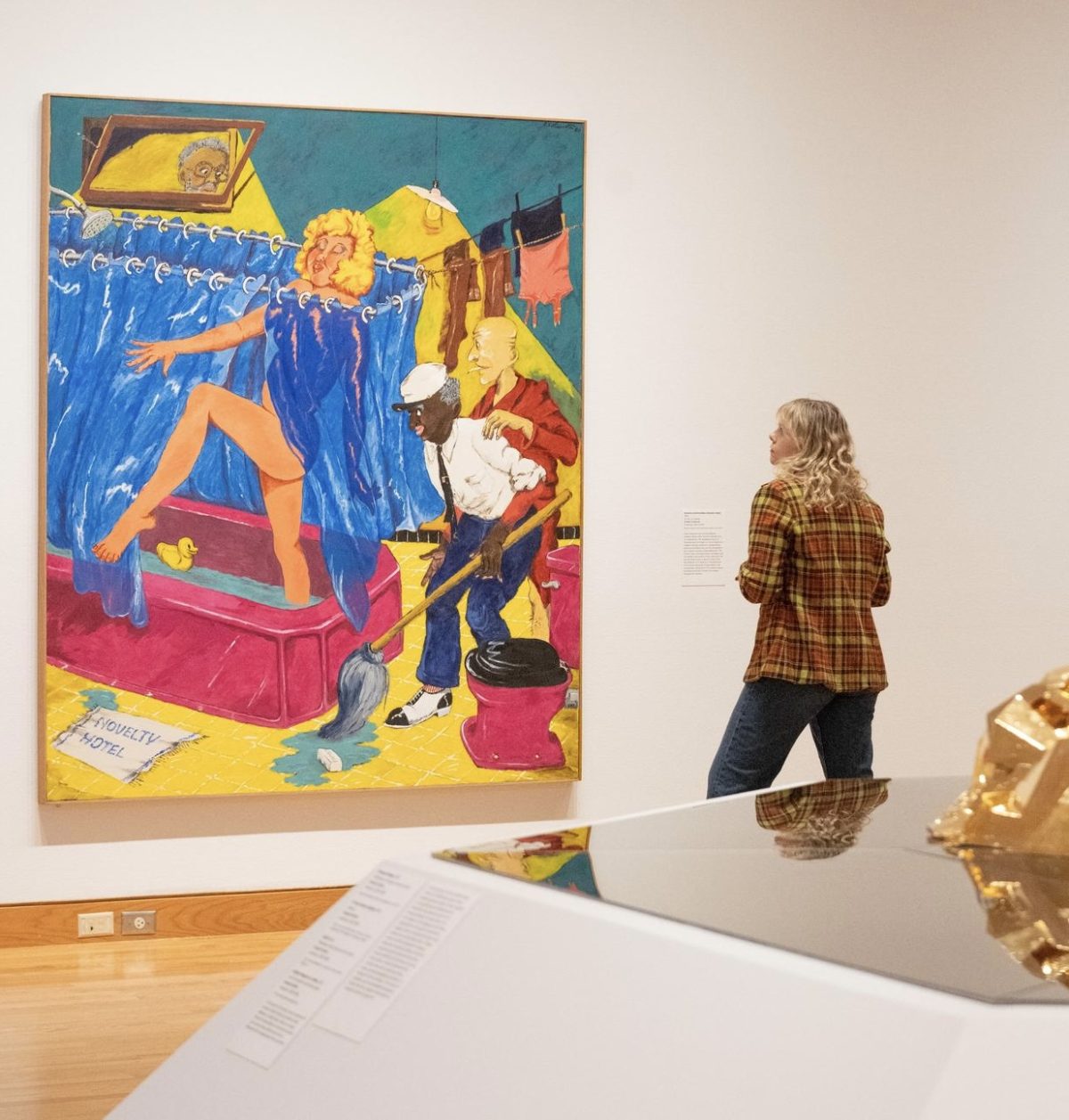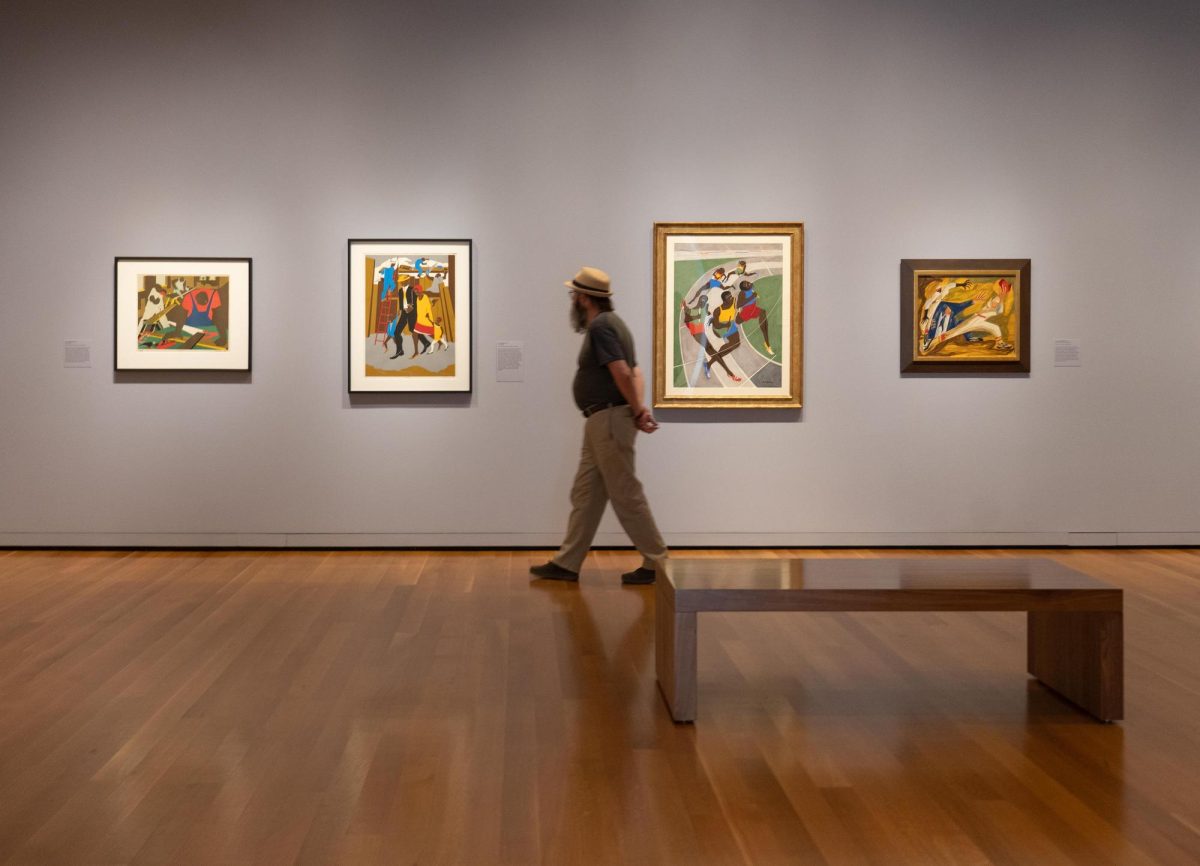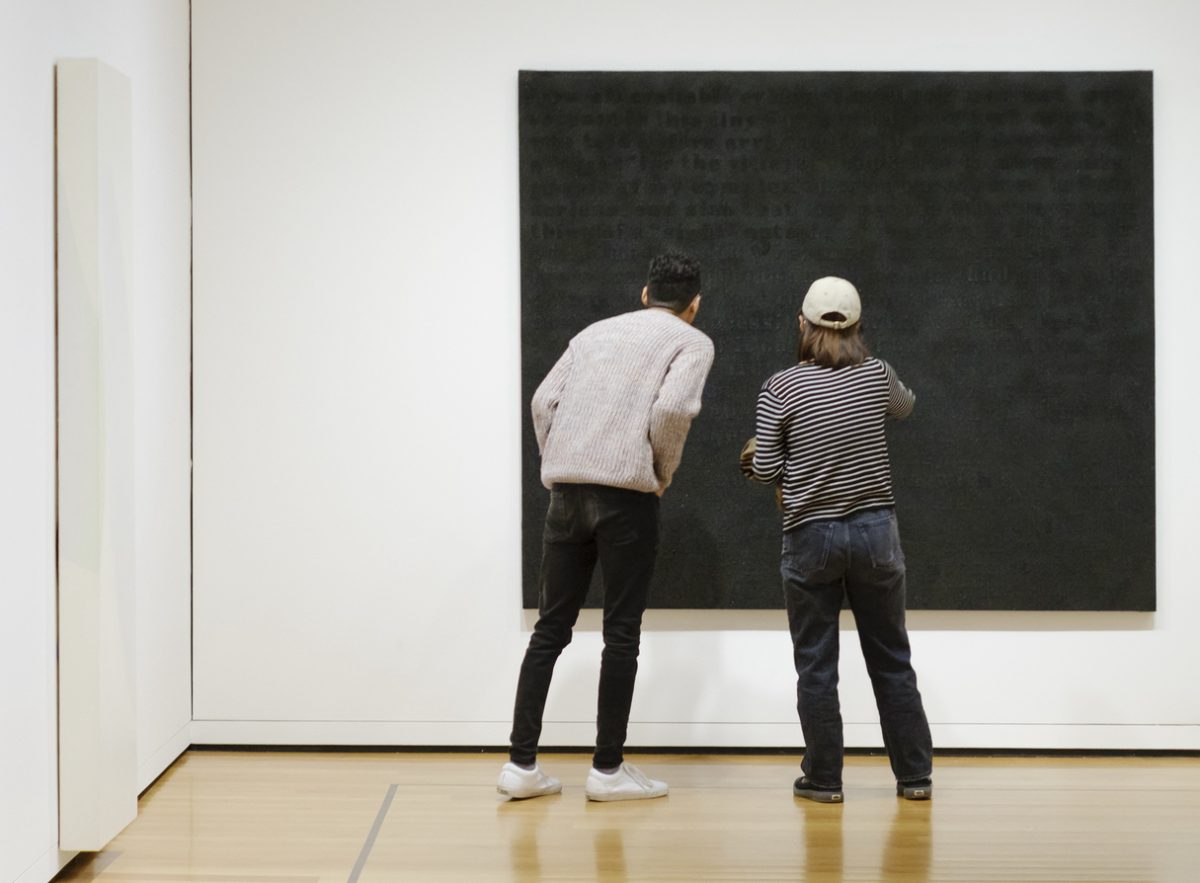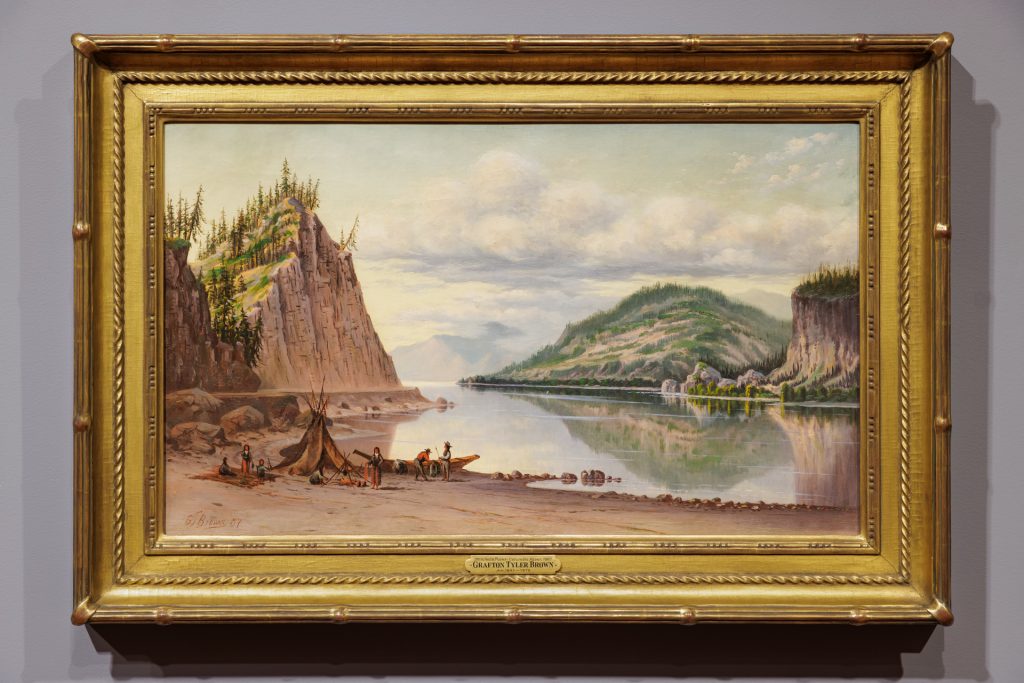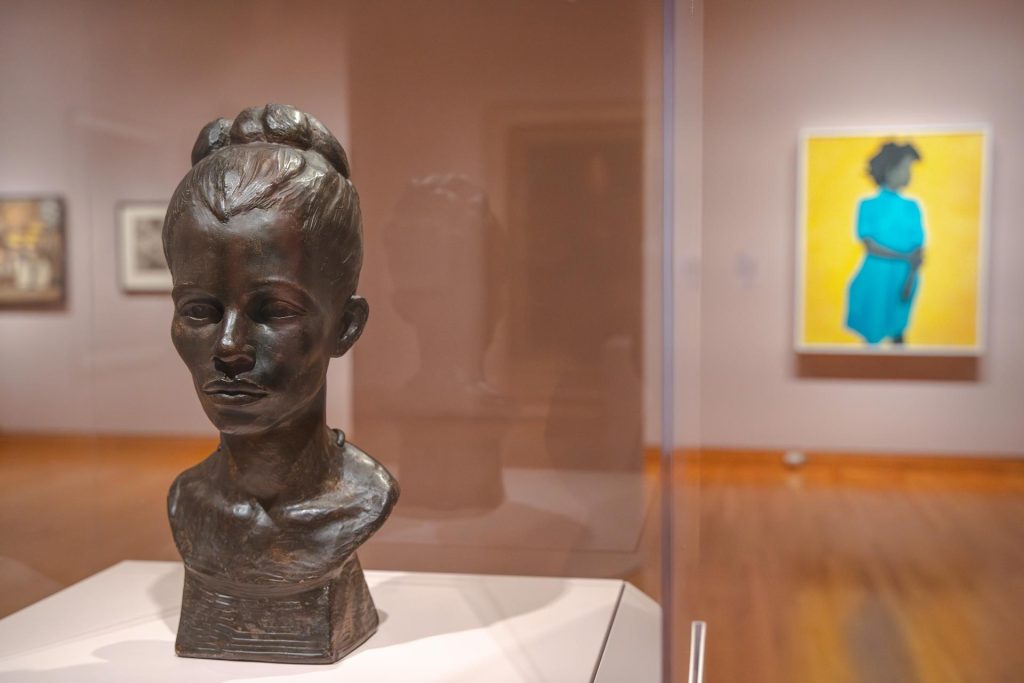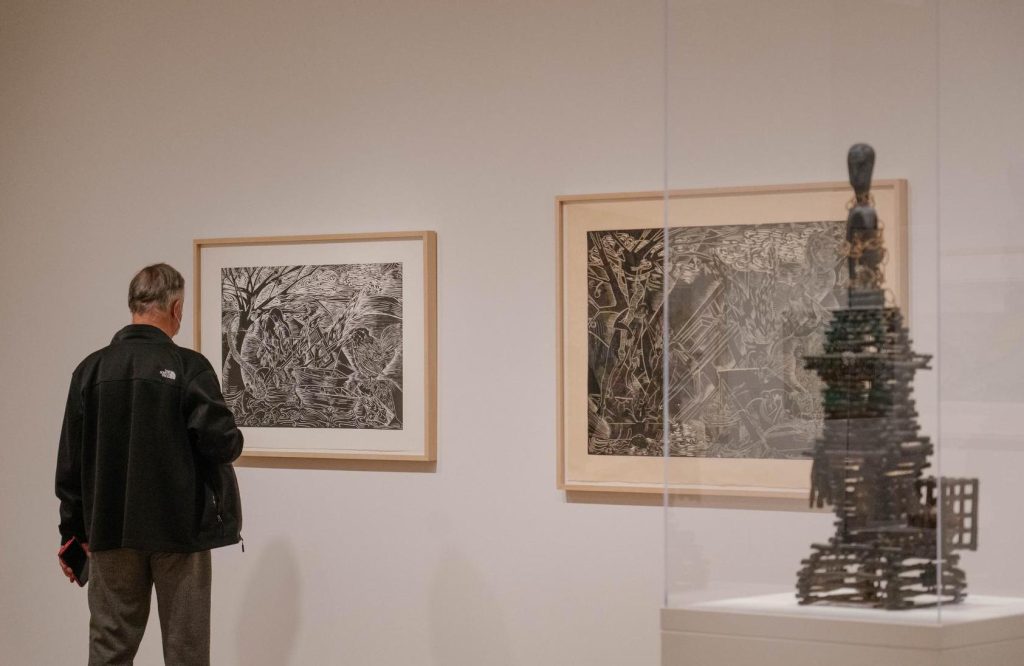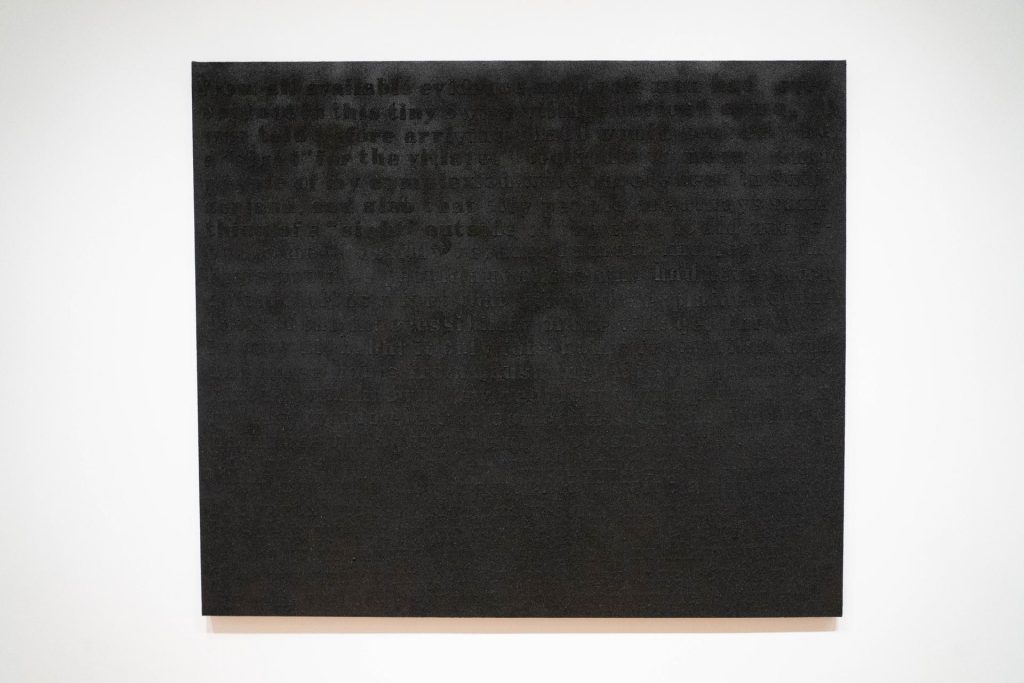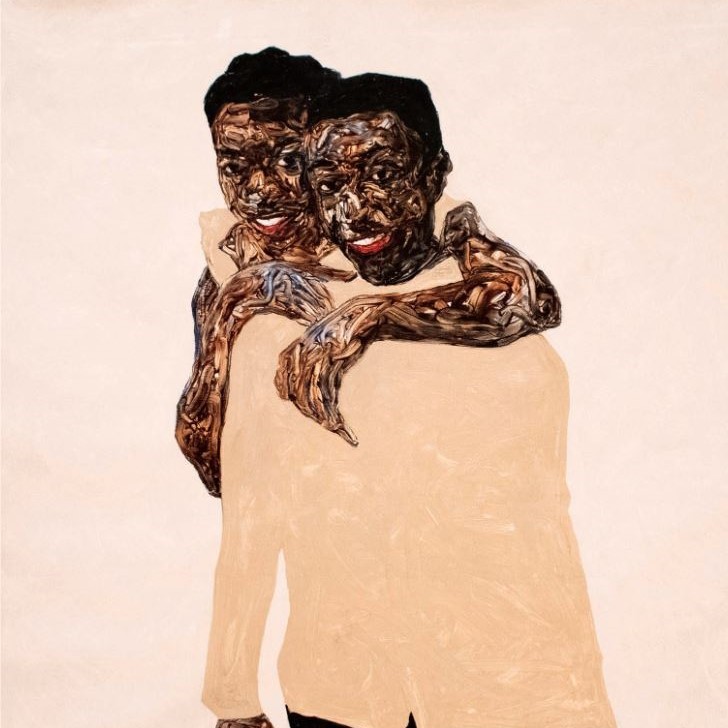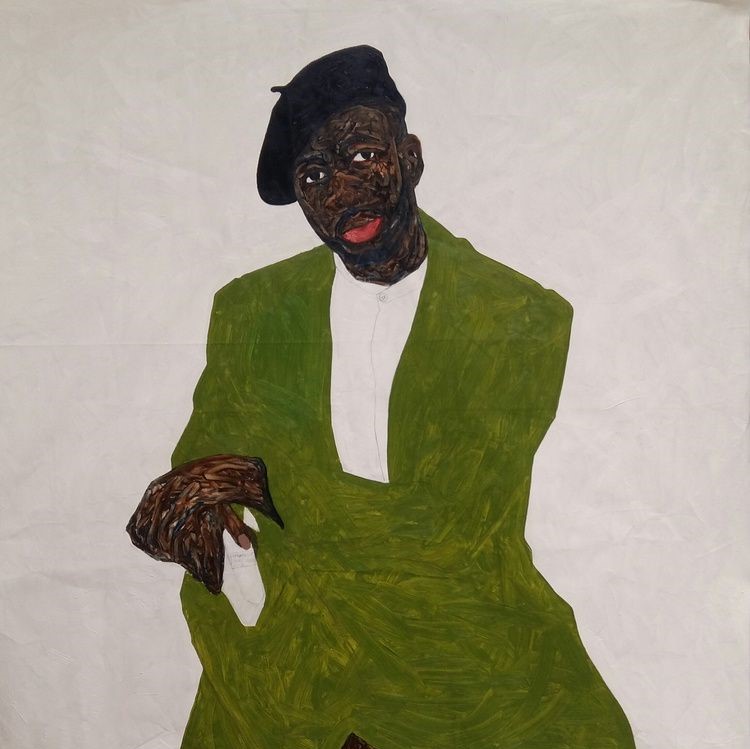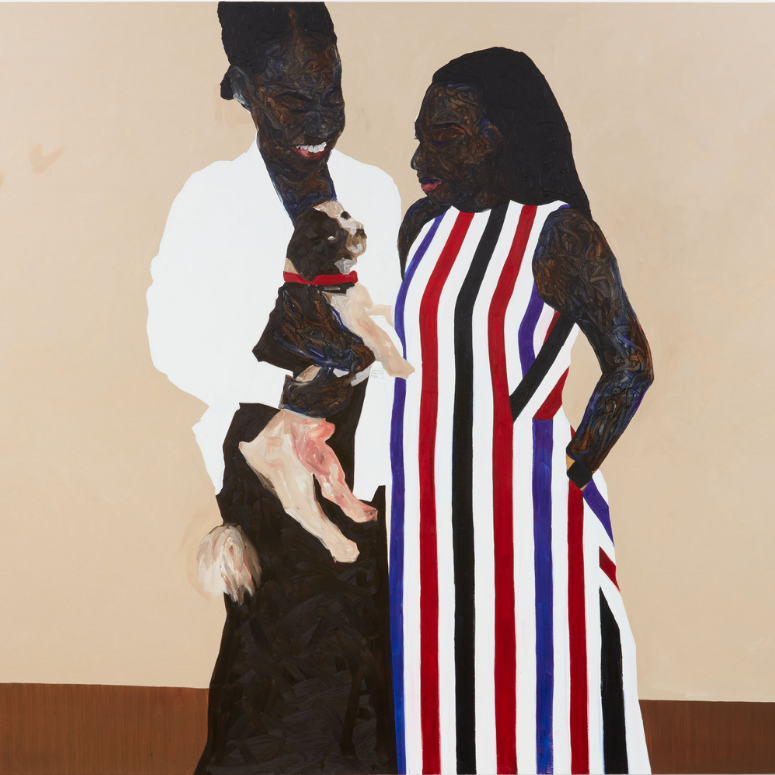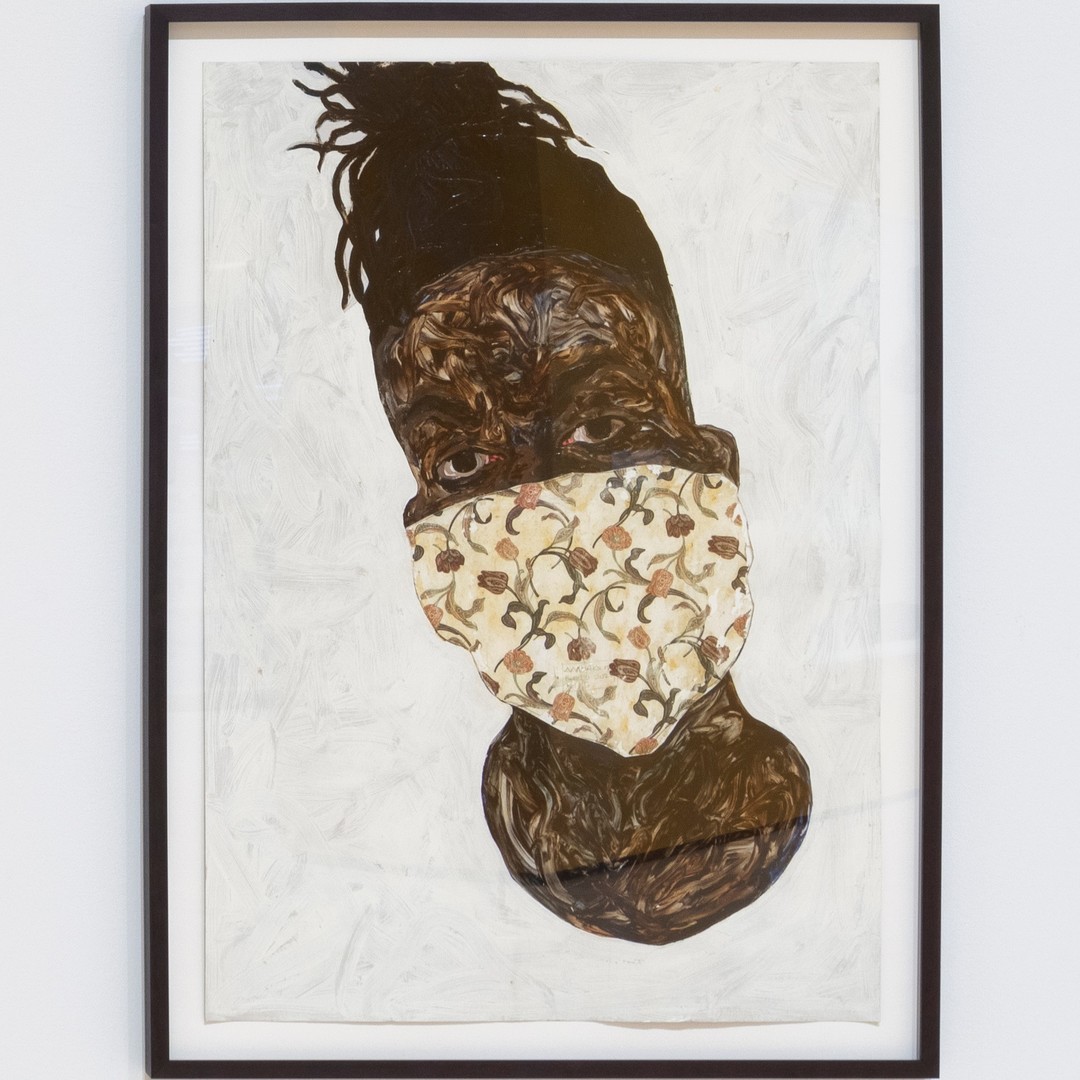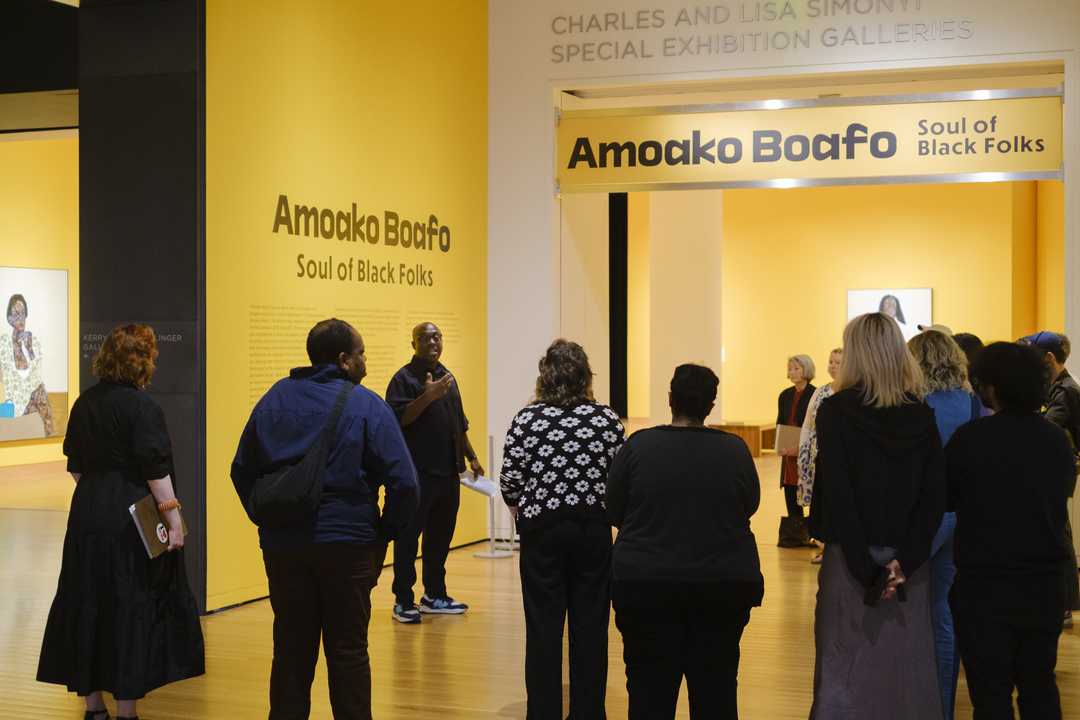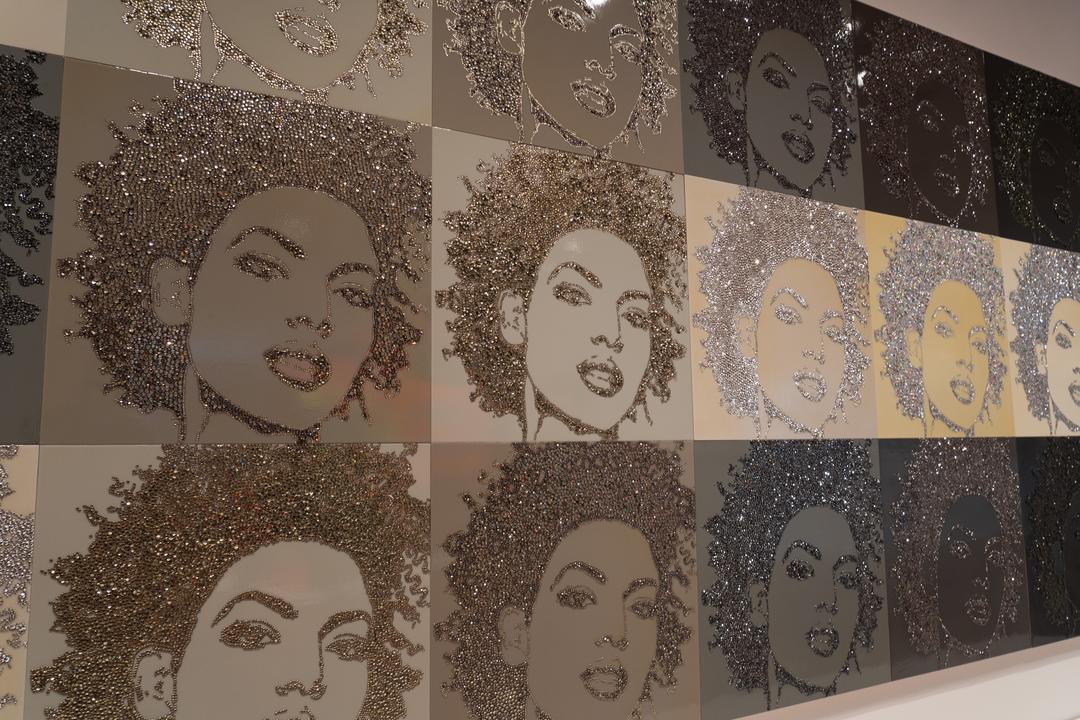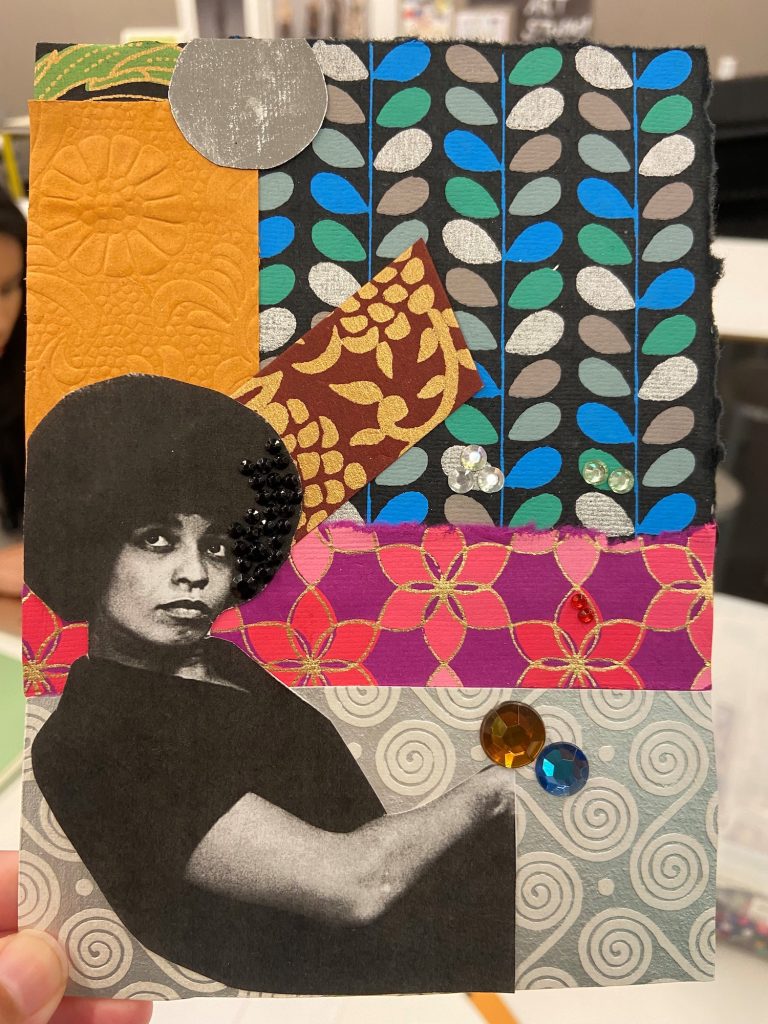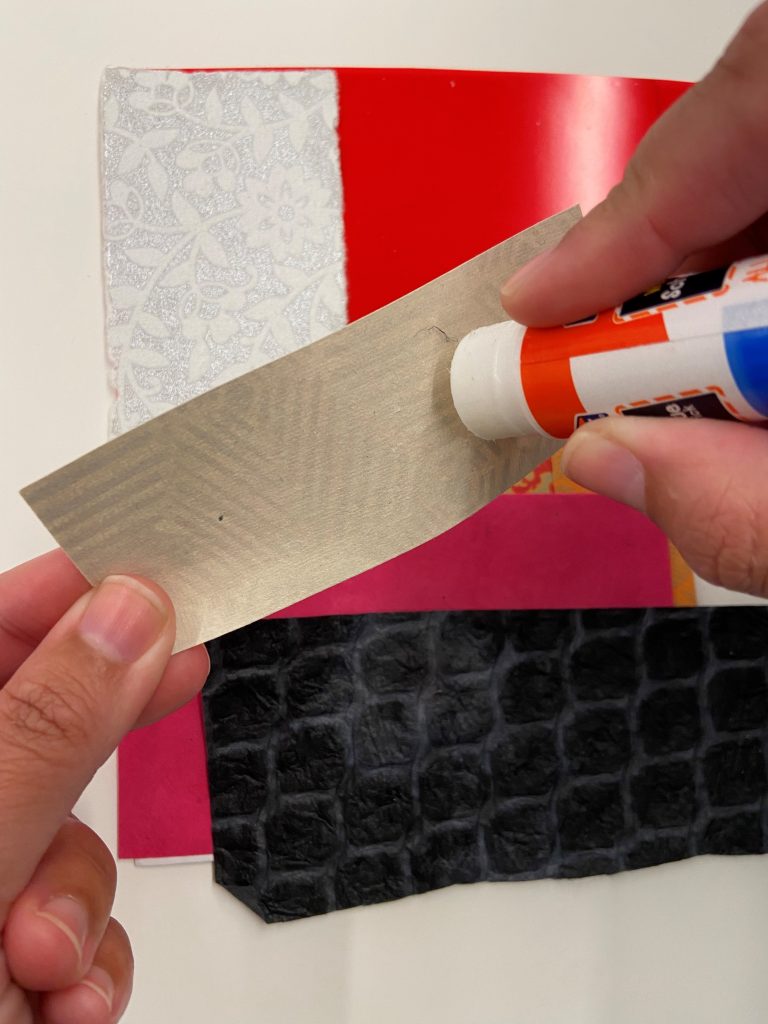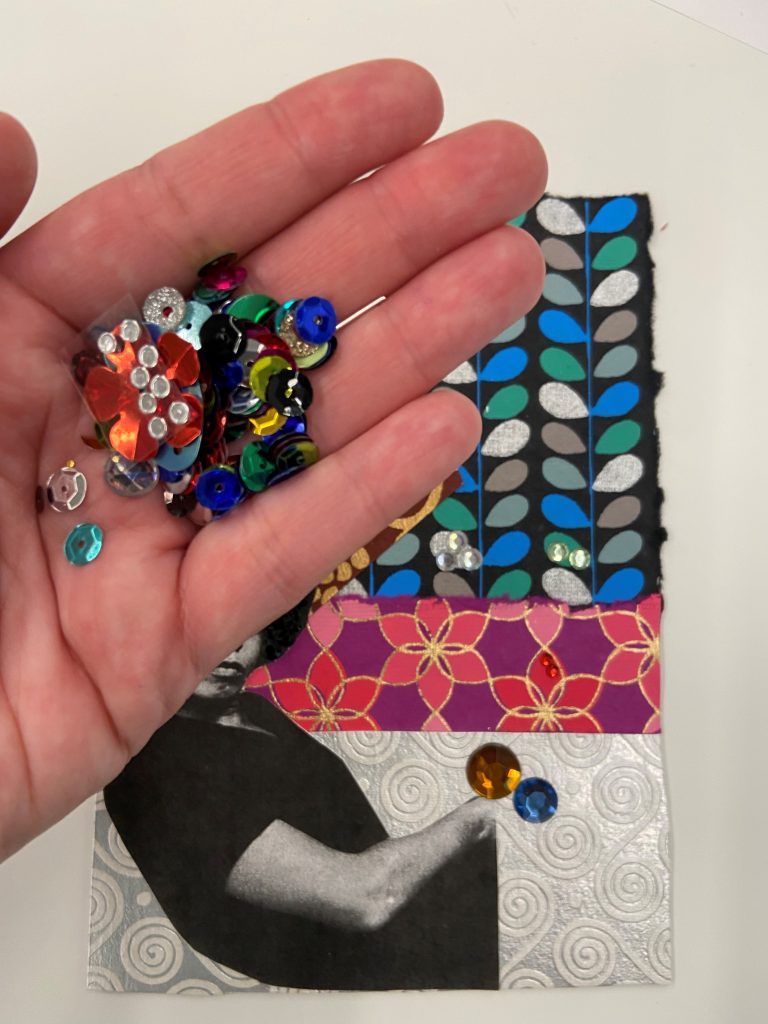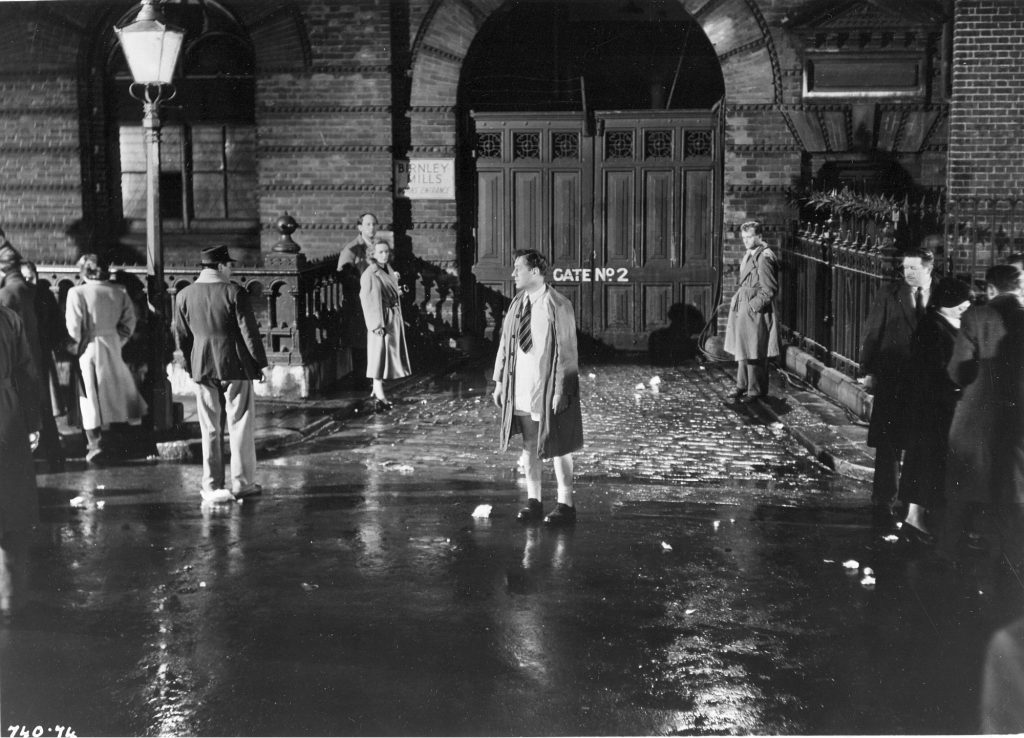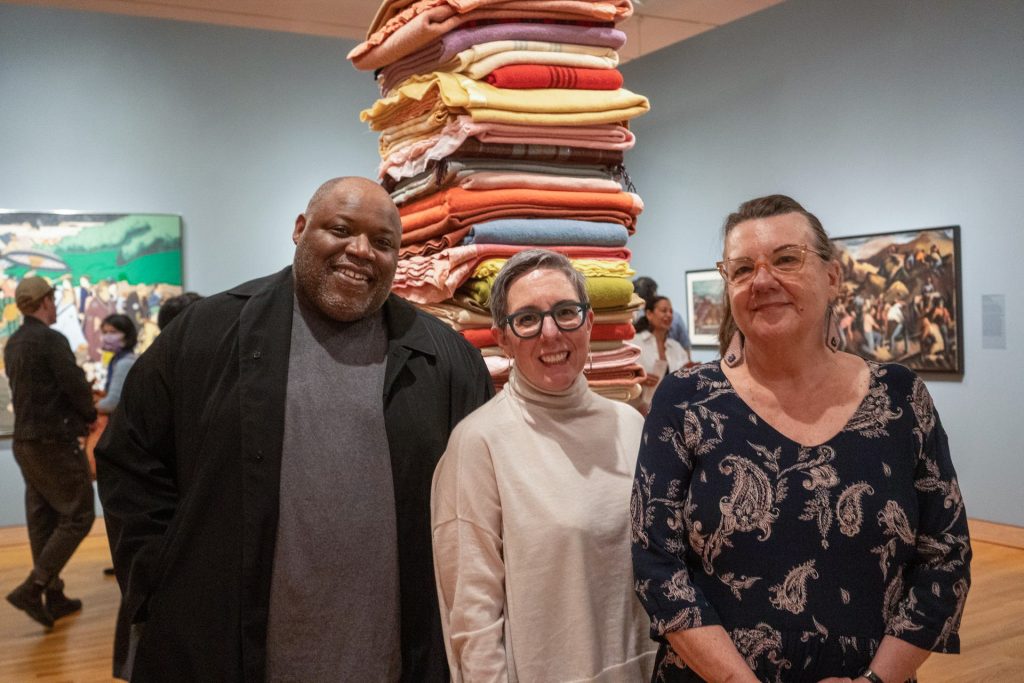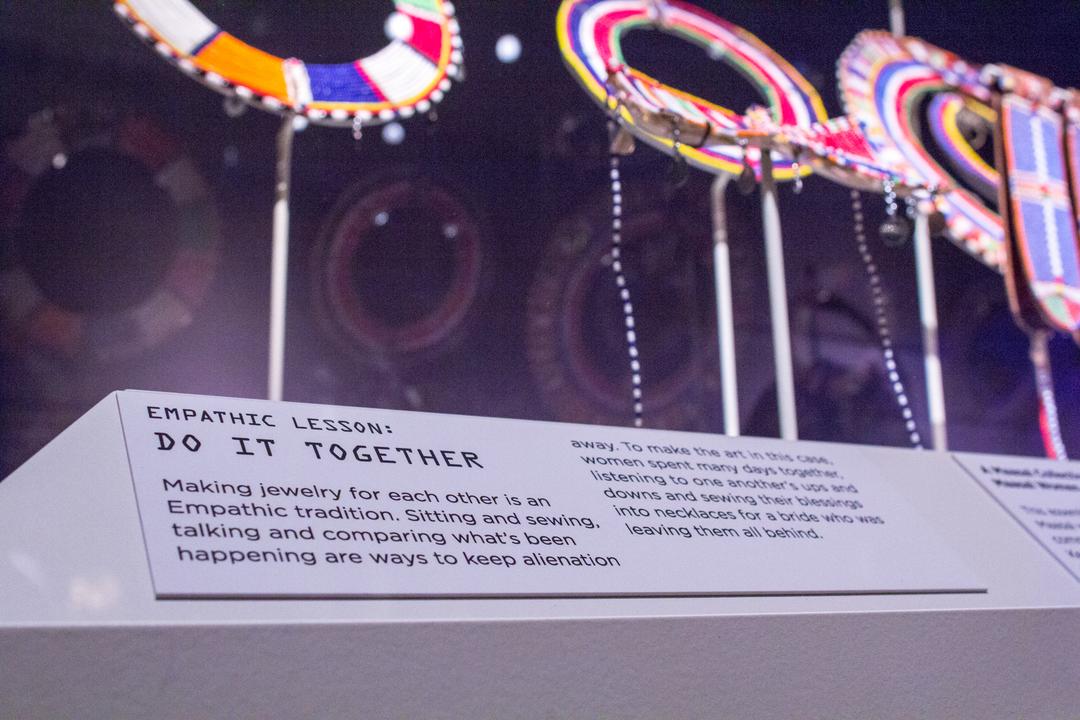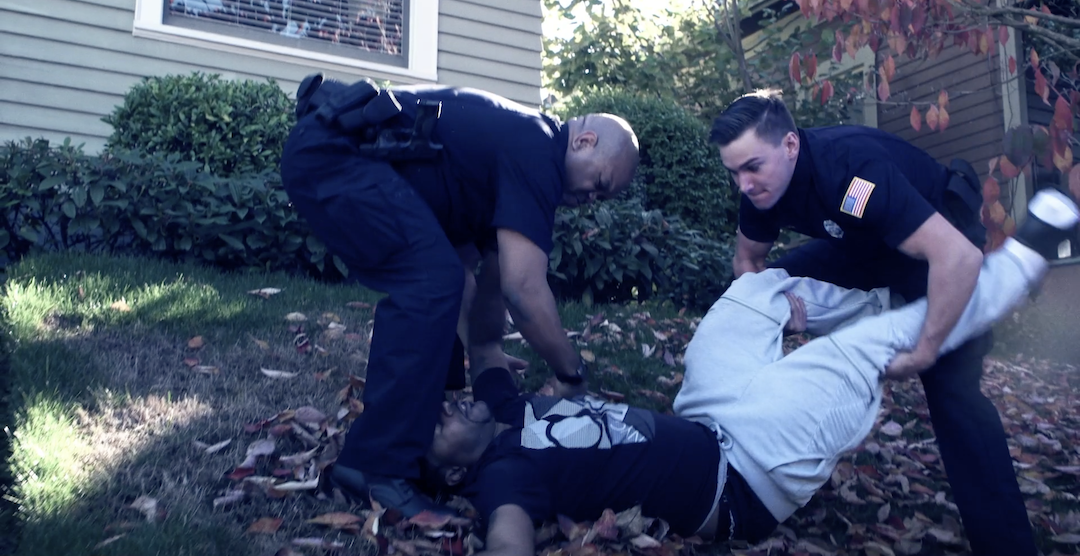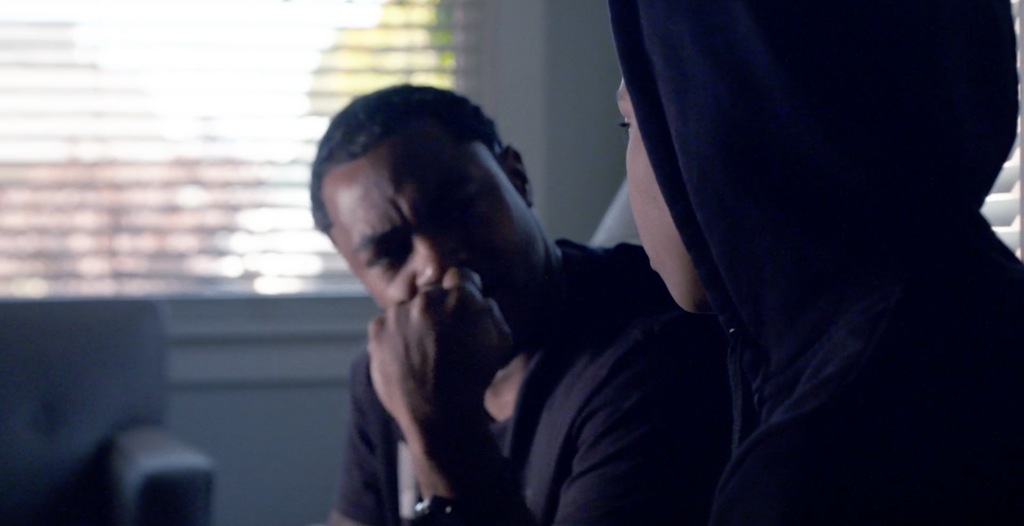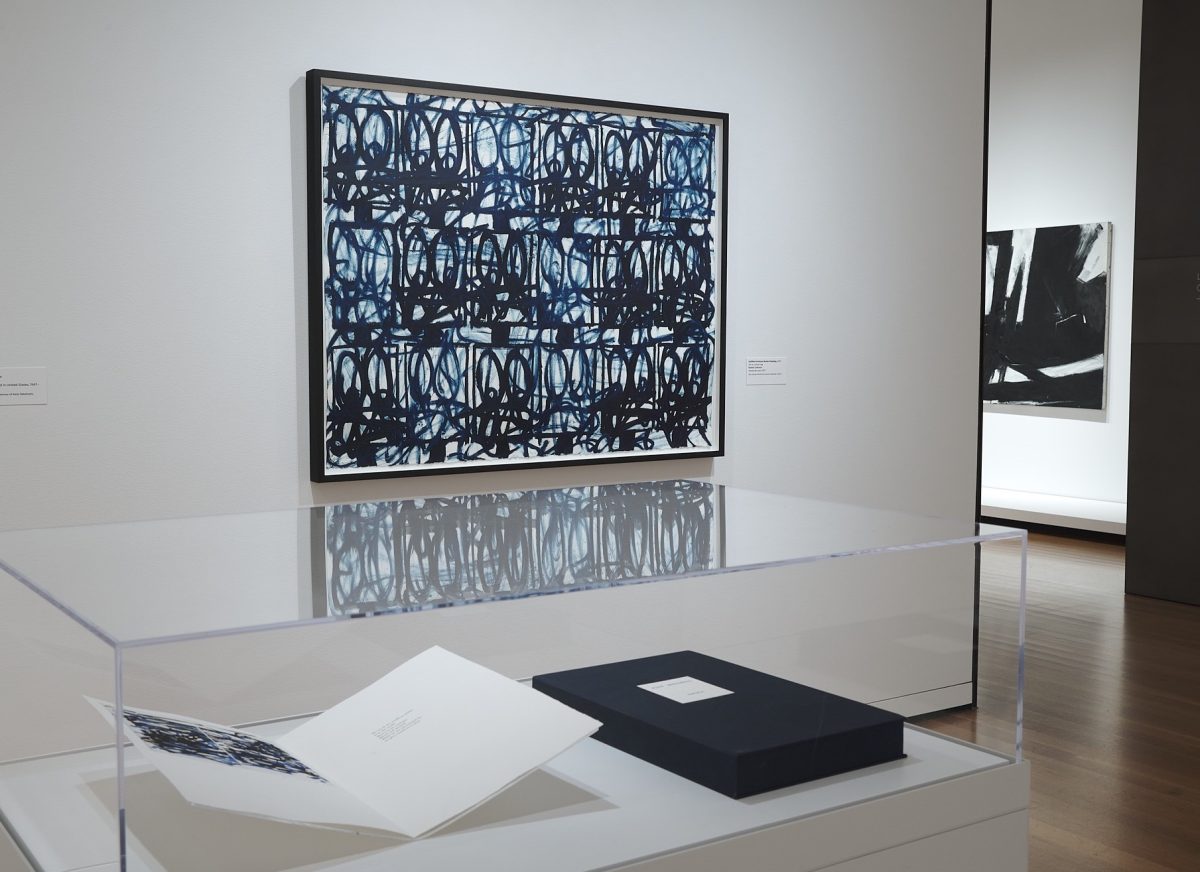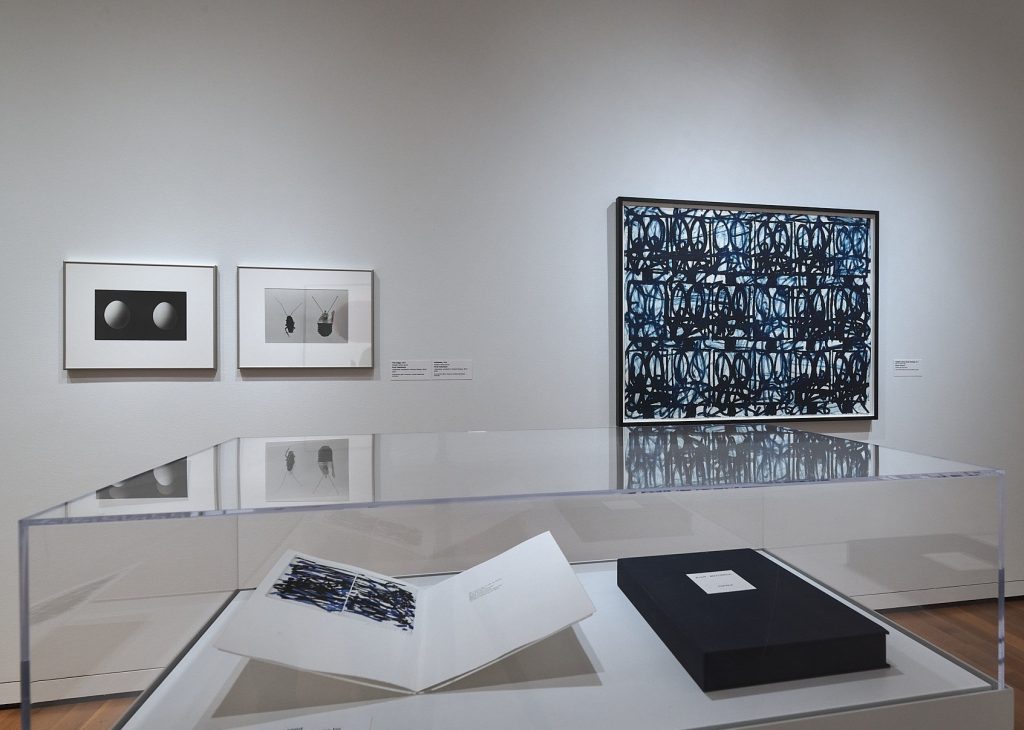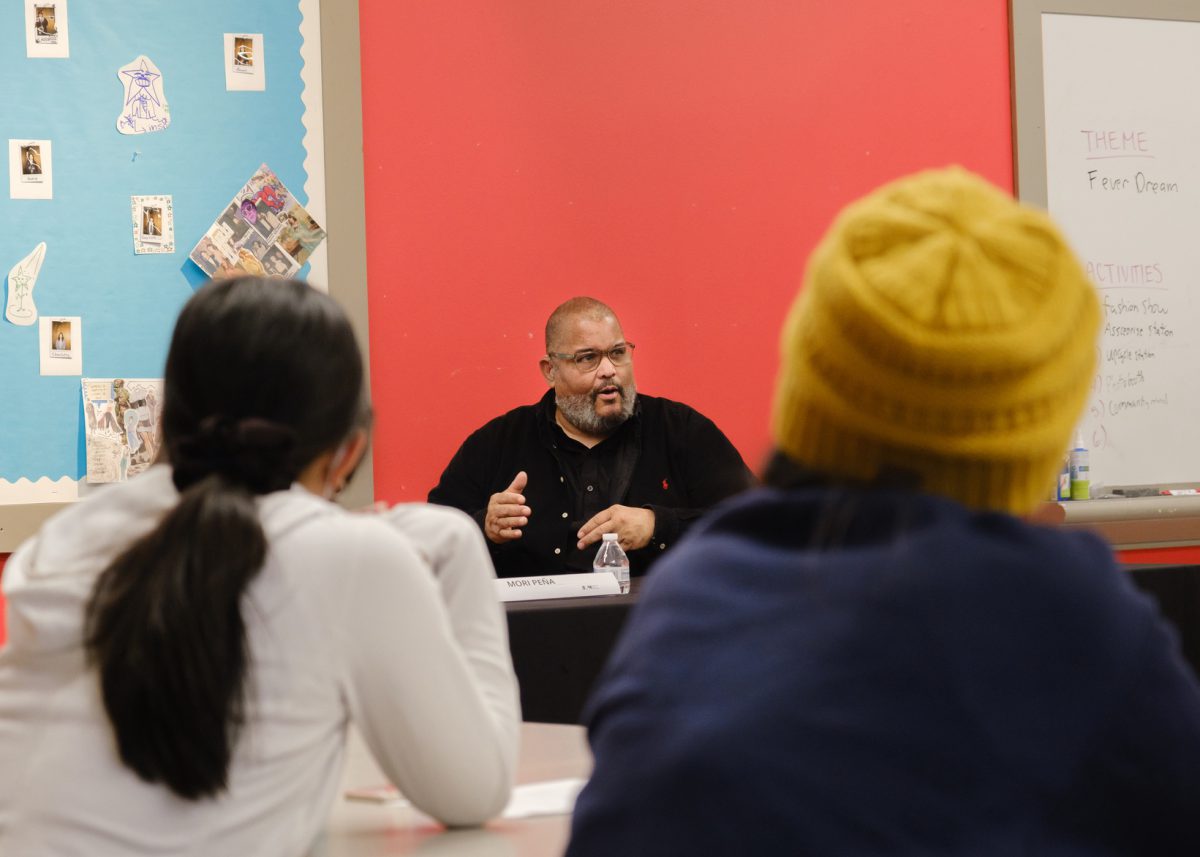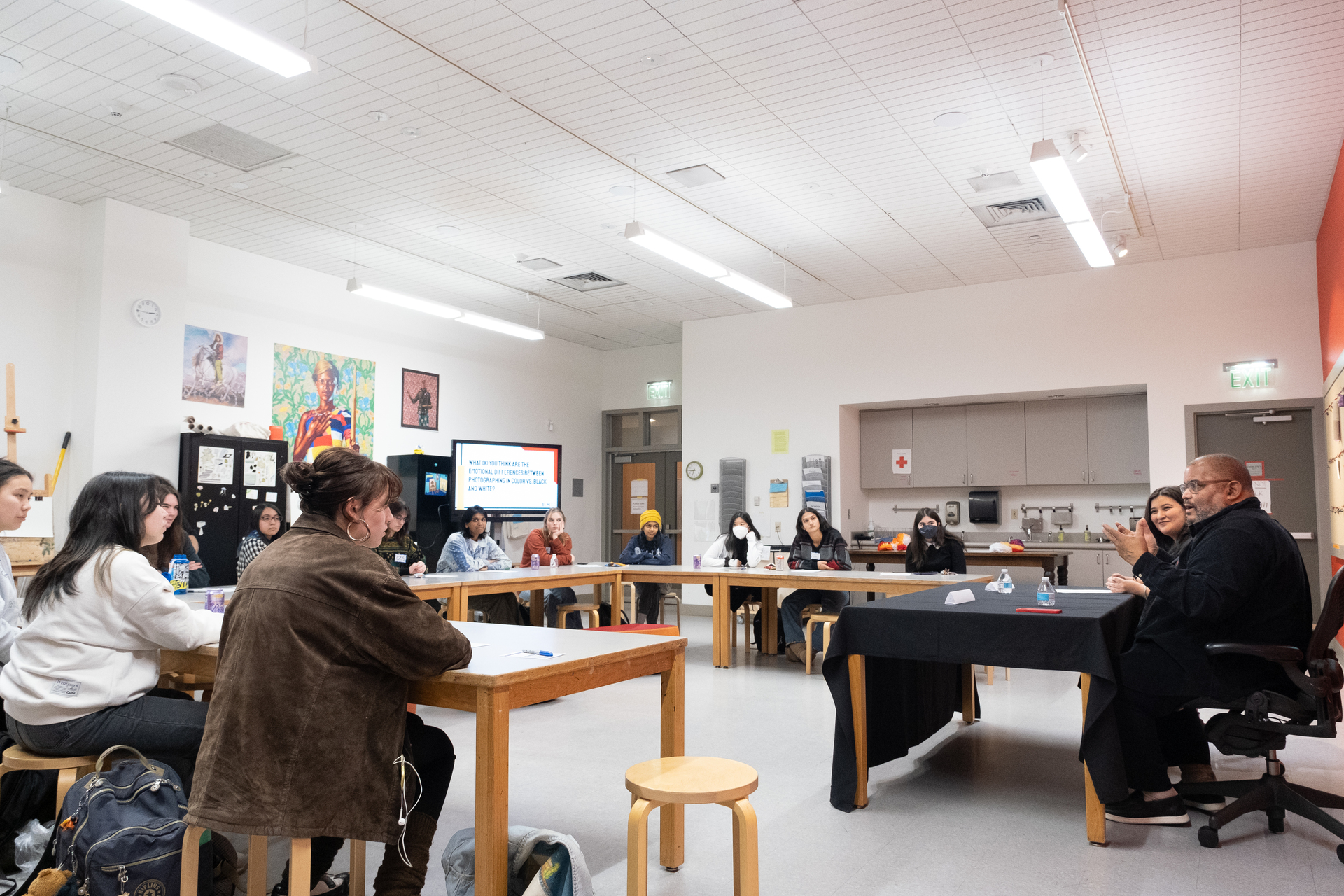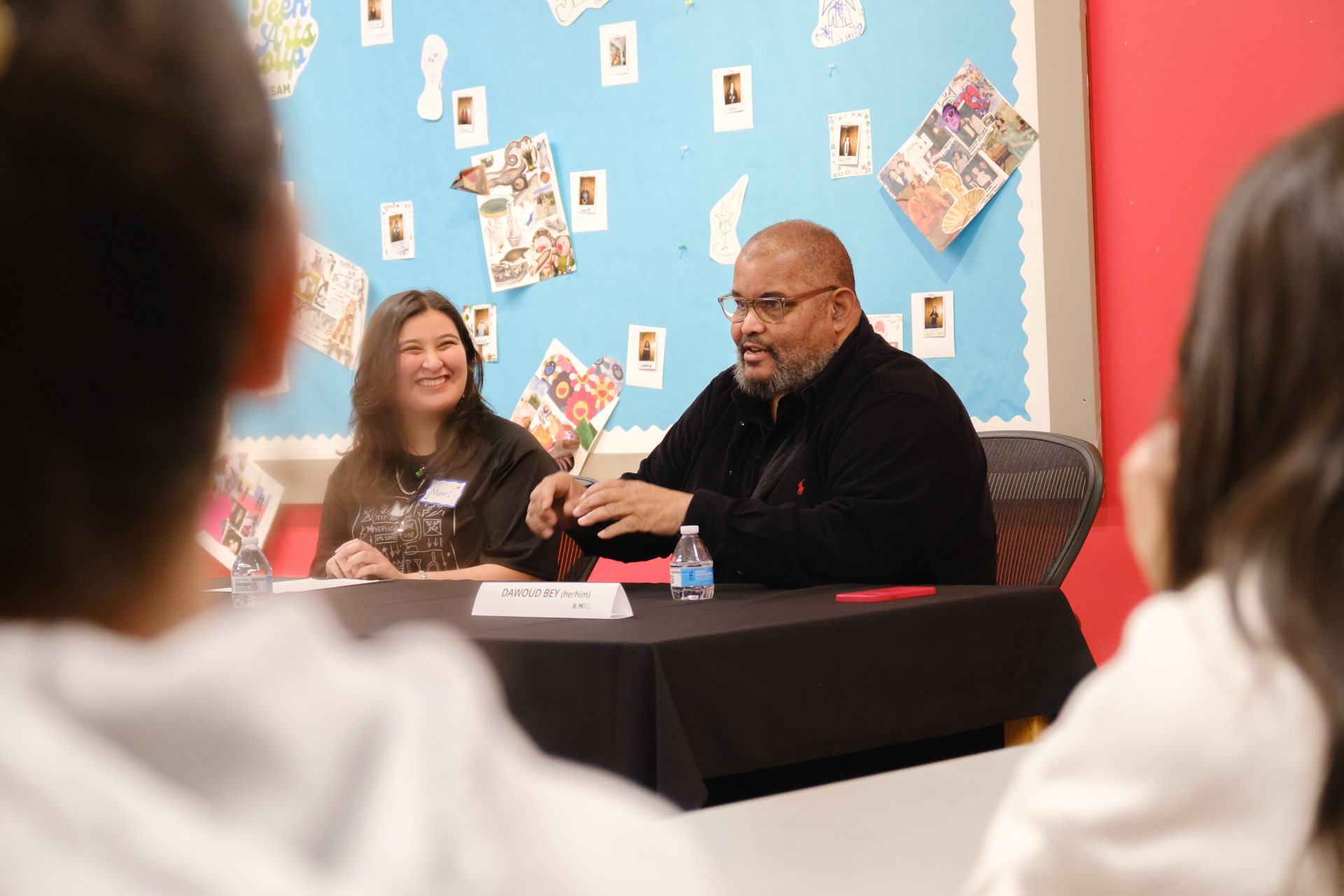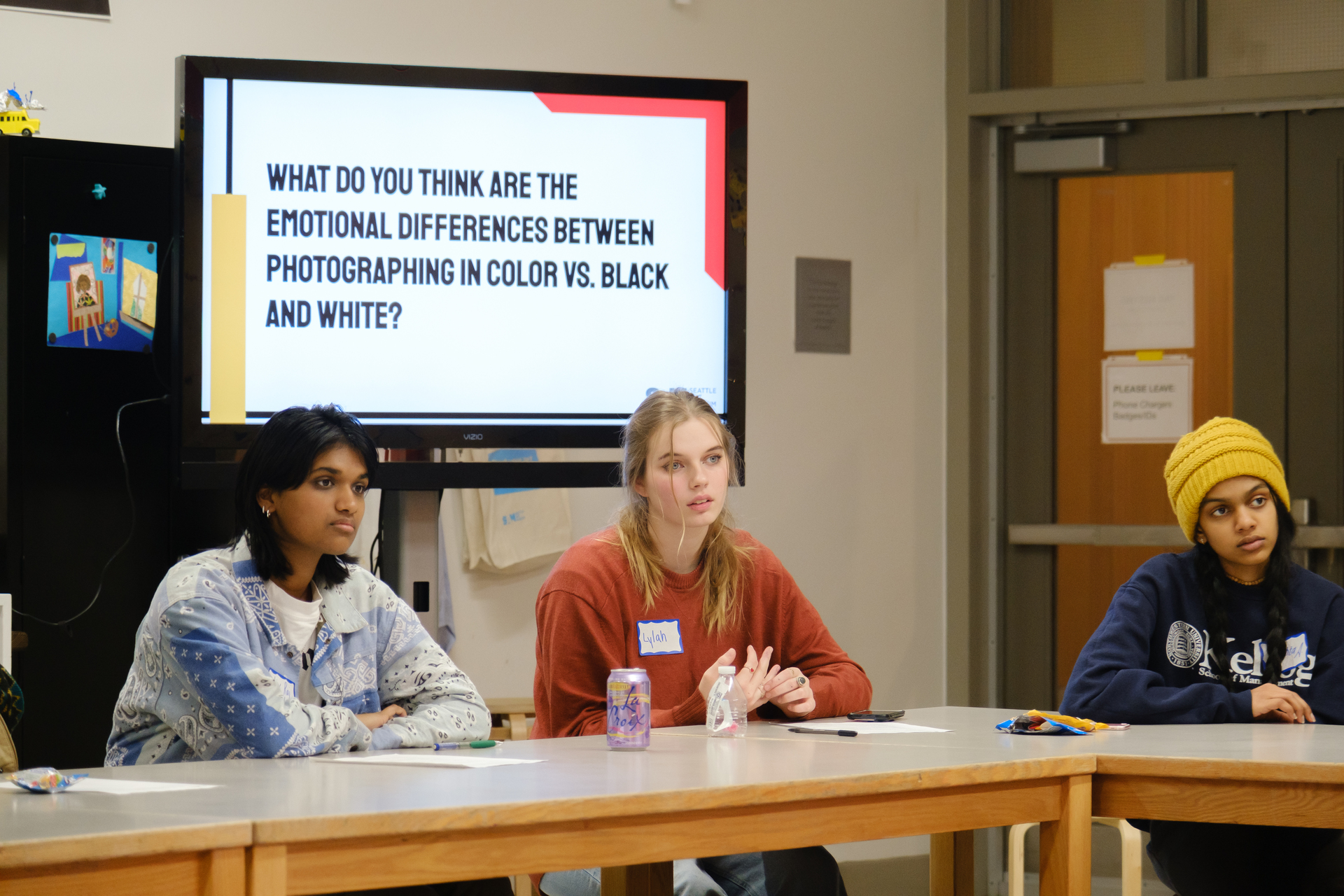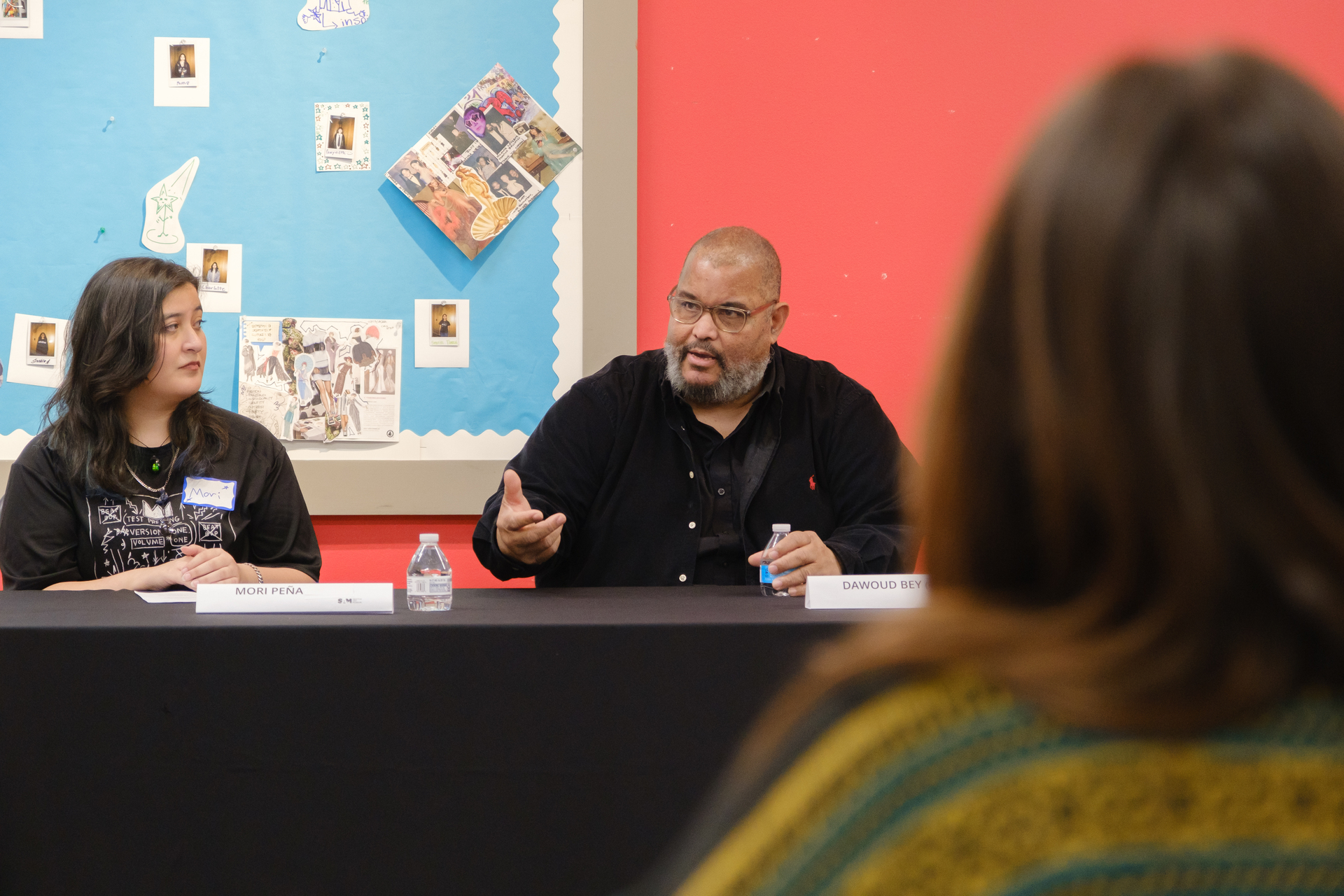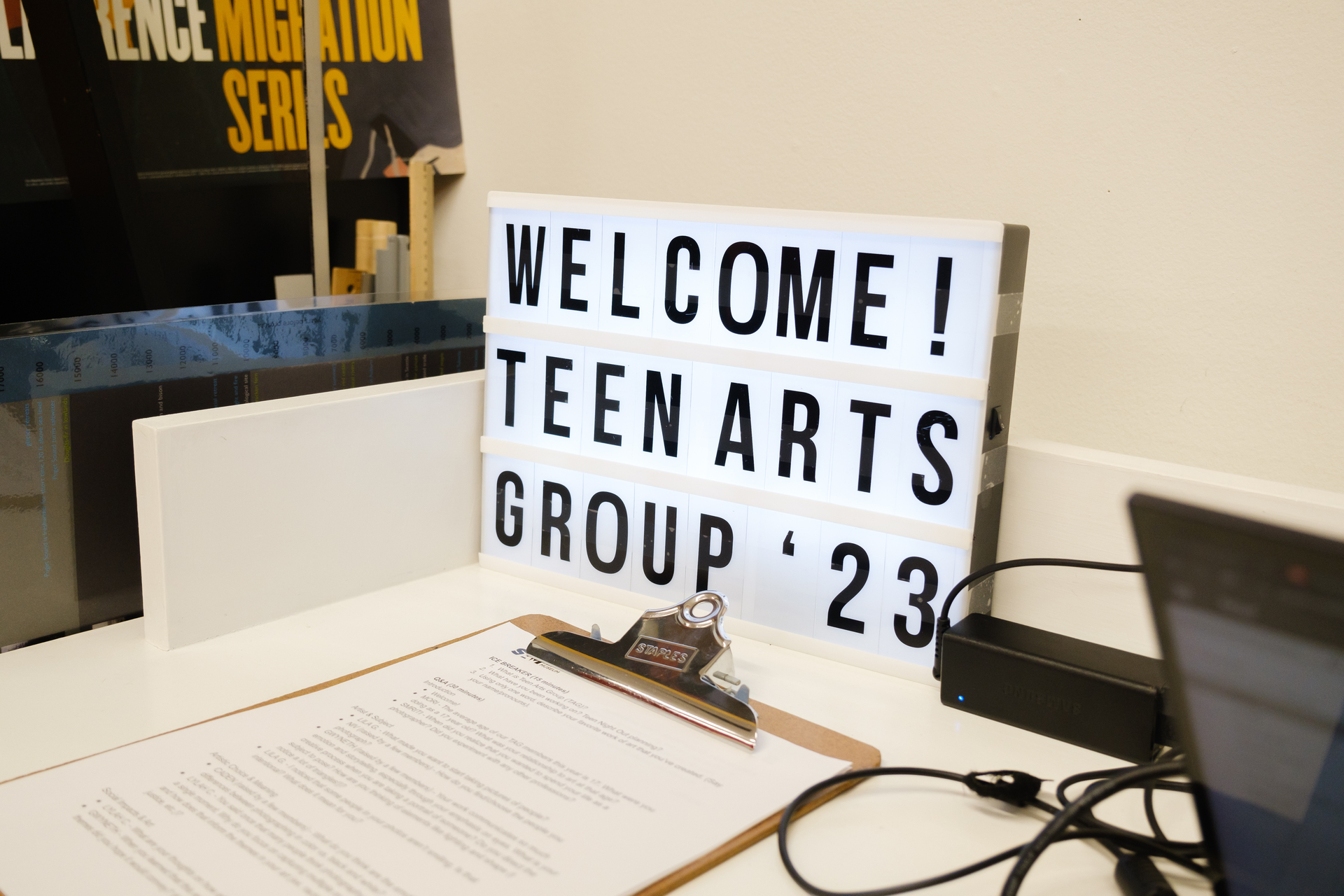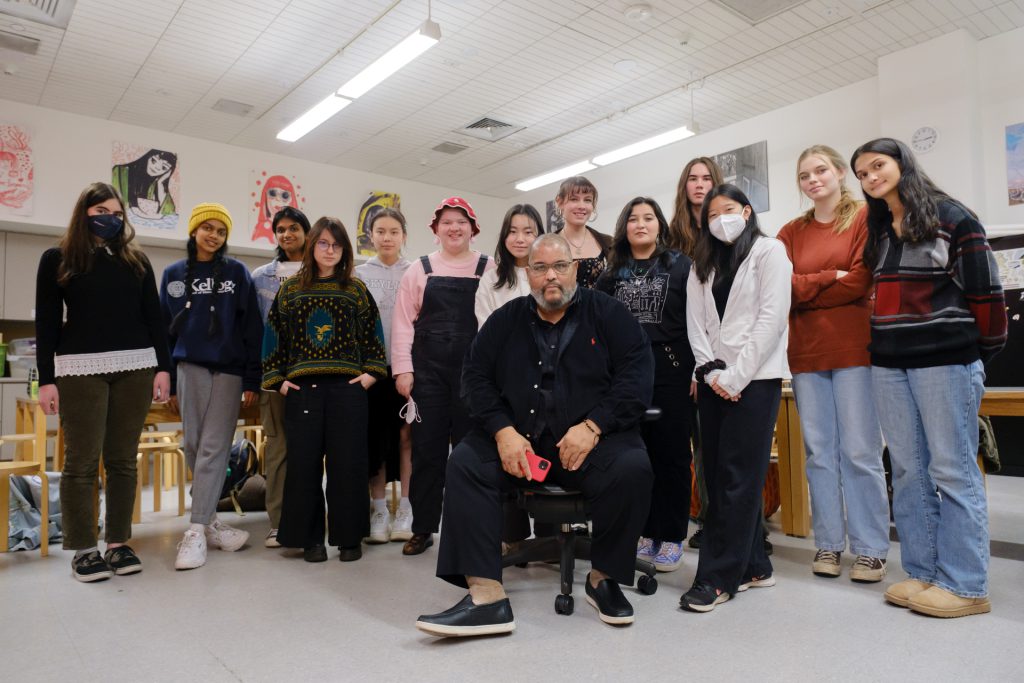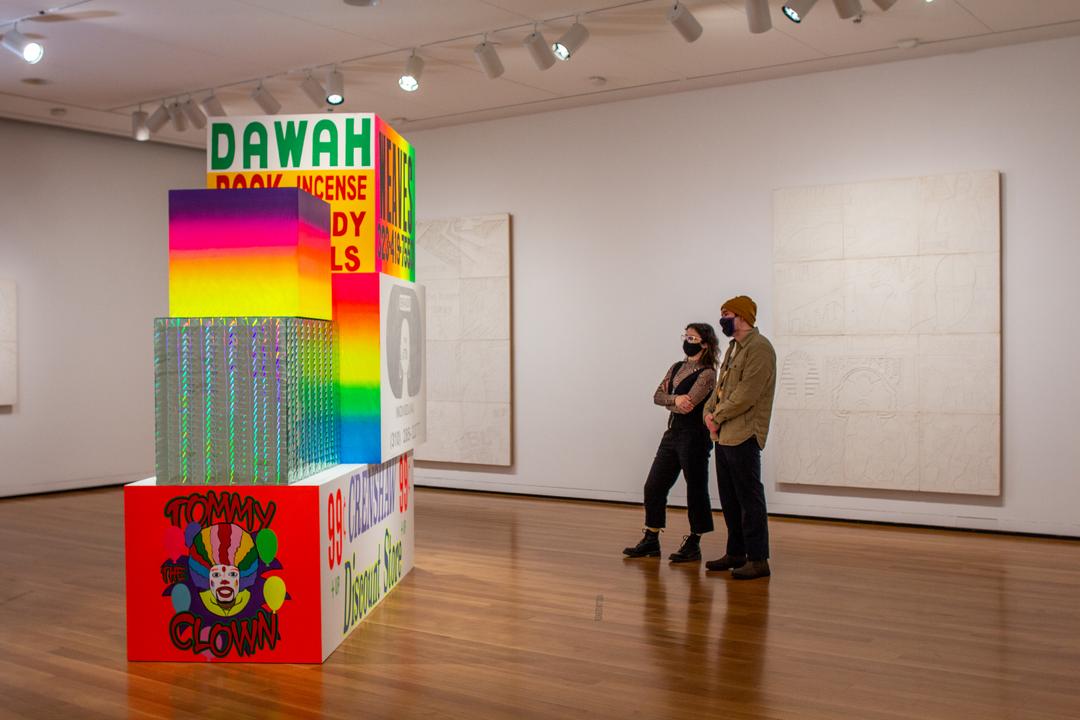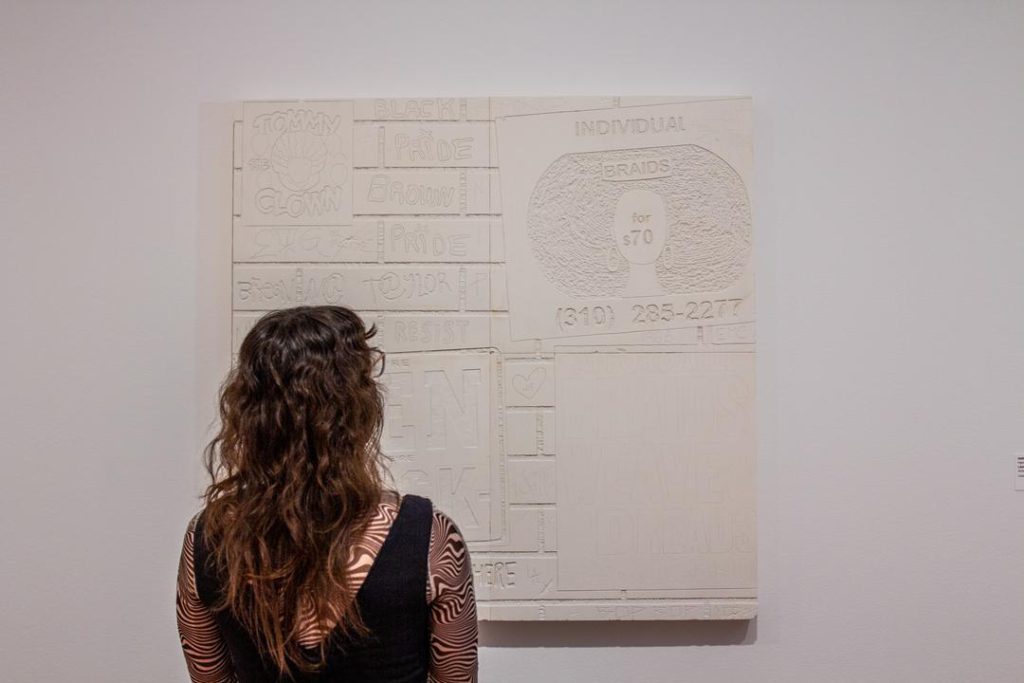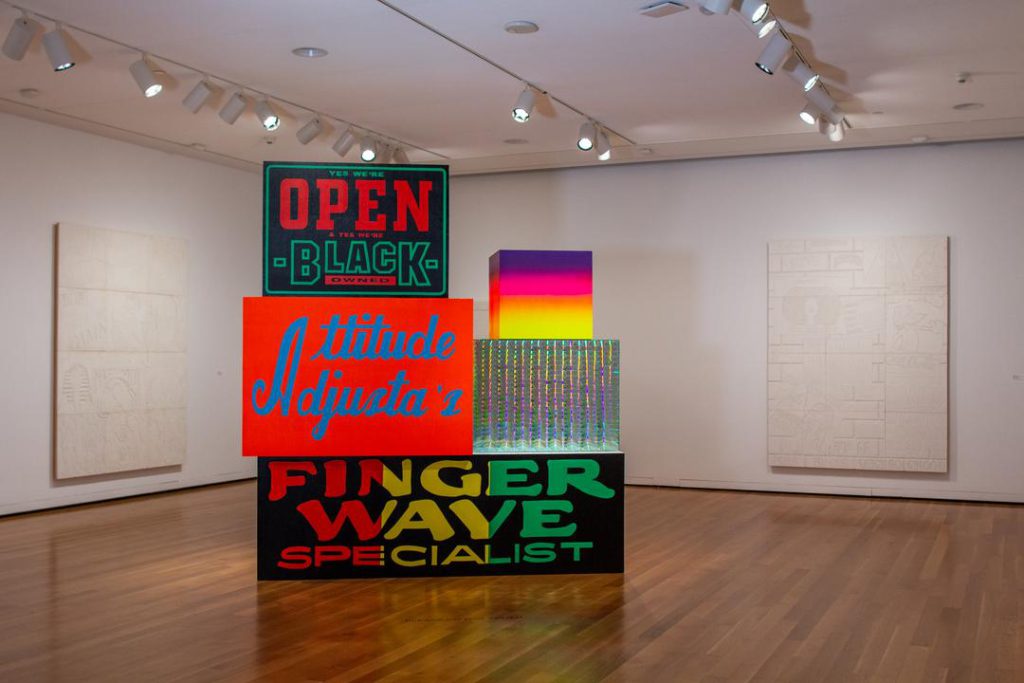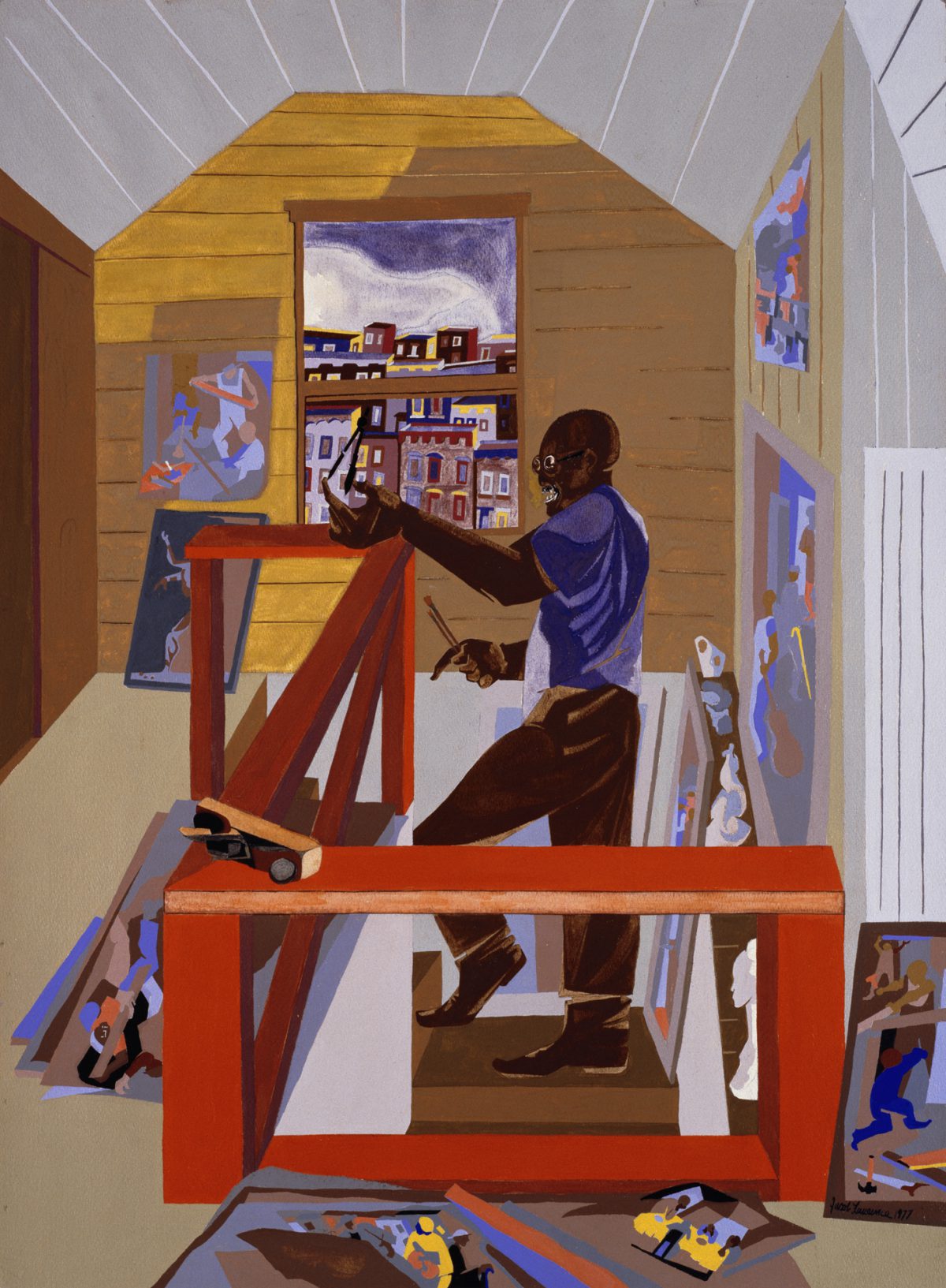Poke in the Eye Object Spotlight: Susanna and the Elders
Poke in the Eye: Art of the West Coast Counterculture is now on view at SAM! This homegrown exhibition features 87 ceramics, sculptures, paintings, and drawings from SAM’s collection—some of which are being shown for the first time. Throughout the run of the exhibition, we’ll be periodically sharing insight on a few of the eclectic artworks on view.
Please note: The following article includes mentions of nudity, coercion, and sexual assault.
Like many works on view in Poke in the Eye at SAM, this painting’s vibrant colors and figurative style draws the viewer in, then flips expectations upside down.
From a distance, Susanna and the Elders (Novelty Hotel) (1980) looks like a cartoon, but the artist, Robert Colsecott (1925–2009), often used this visually appealing strategy to hook viewers and make them confront the more serious issues of race and gender that are in his works.
This intriguing painting is titled after a story from the Bible that perhaps wouldn’t be so well known if not for the many Renaissance artists who painted it. Although Colescott didn’t cite one particular artwork as inspiration for his work, he was familiar with this subject from historical artists like Tintoretto, Peter Paul Rubens, Rembrandt van Rijn, and many others who depicted the story.
In this tale, found in the Book of Daniel, two men are spying upon Susanna bathing in the garden of her home. They catch each other peeping and unite to coerce Susanna into having sex with them. They threaten to blackmail her, but still she refuses. They have her arrested and publicly accuse her of adultery. These two respected men are judges and elders in their community and Susanna is sentenced to death on their word until the prophet Daniel appears and questions them. He finds major differences in their stories and declares Susanna innocent.
Although a somewhat minor anecdote in the Bible, Susanna’s story became popular partly because it allowed artists to display their talent at depicting nude women. During the Renaissance, artists often portrayed Susanna lounging naked, sometimes unaware of the men watching, or other times, seeming to seduce them. Like the elders watching the oblivious Susanna, the patrons and viewers of these paintings also act as voyeurs of Susanna and lust after her with the excuse that the artwork depicts a biblical story.
Robert Colecott interprets this tale in his own way: a naked blonde woman emerges from behind a shower curtain, much to the glee of three ogling men and one rubber ducky. At the Novelty Hotel (a real hotel that Colescott visited in Paris), a bald white man in a red robe, cigarette hanging out of his mouth, and a Black janitor holding a mop are directly next to this Susanna, physically leaning on one another as they witness this scene. Another Black man peers in through the open window, a self-portrait of Colescott himself with his signature glasses and facial hair. The rubber ducky also seems to be looking up at her eagerly from the tub. None of them are touching Susanna or harming her, but they are intruding on the privacy of her hotel room and her body.
Much like the men in this scene, the viewer is also a voyeur complicit in this visual violation. With its bright colors and cartoonish style, paired with the towering seven-foot-tall canvas on which it sits, Colescott’s painting is unmissable. Visitors passing by can’t help but stop and stare at the intrusive tableau.
Susanna’s eyes appear closed as if she’s unaware of those watching her. Alternatively, Susanna’s facial expression could be interpreted as giving the voyeurs a flirtatious smile over her shoulder, as if performing for them. With all these eyes looking at her, it seems impossible that she wouldn’t notice these men around her, but is she to blame for their actions? By calling her Susanna in the title, she is aligned with the innocent and happens to be the unfortunate subject of this male attention.
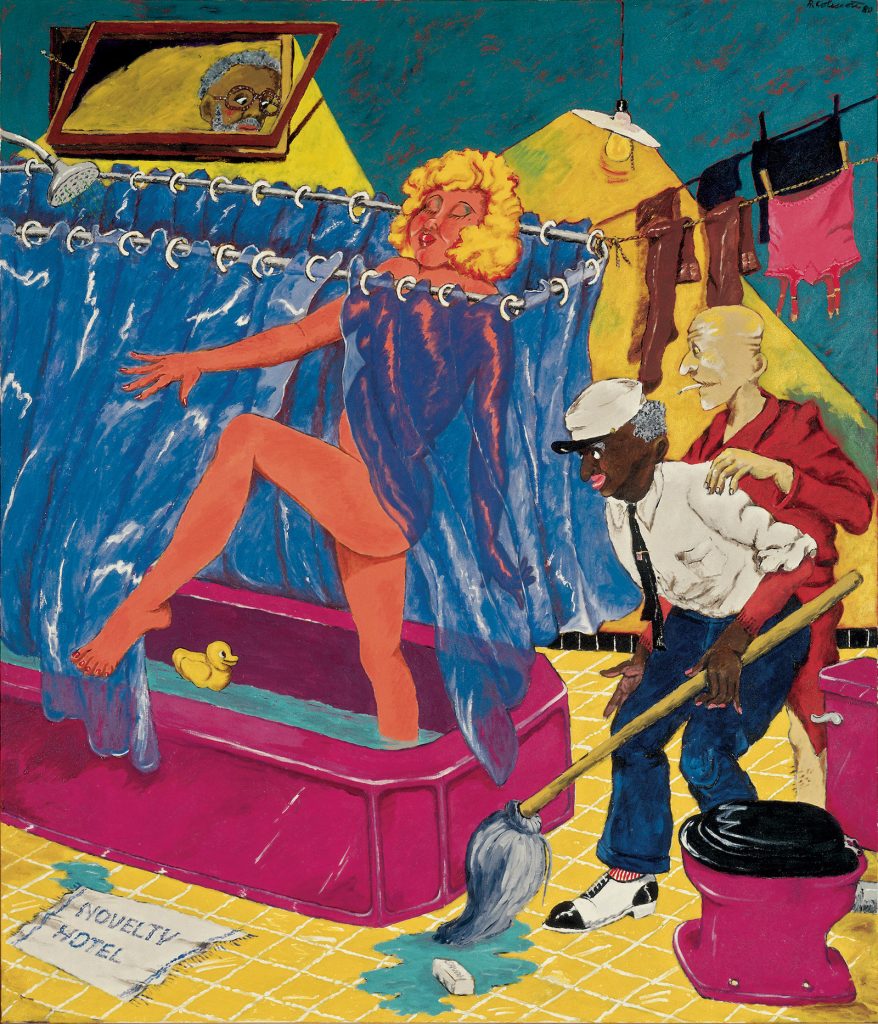
Colescott grew up in Oakland, California and attended the University of California, Berkeley where he studied painting. He studied in Paris for a year, working with Fernand Leger. Colescott’s Night and Day, You Are the One (1969), also on display in Poke in the Eye, more closely resembles Leger’s Cubist-inspired, rhythmic style. Colescott visited and lived in Paris throughout his life, but returned to Berkeley for his master’s degree before becoming an art teacher in the Pacific Northwest, at a junior high school in Seattle and Portland State College. He later held other teaching positions in Cairo, Egypt, California, and Arizona.
From the mid-1970s on, Colescott was well-known for creating artworks that spoofed and remixed art history. He was a satirist, taking the serious subjects of the art world and translating them with critique, wit, and humor into offbeat commentaries.
Often, Colescott subverts artistic precedents by changing the racial makeup of the scene, substituting Black figures for the historically White main roles. Another work on display in the galleries of Poke in the Eye, Les Demoiselles d’Alabama: Vestidas (1985) plays on Pablo Picasso’s famous Cubist painting of sex workers, Les Demoiselles d’Avignon (1907). Picasso’s original took direct influence from African masks, at the time regarded as “primitive” in the wake of ongoing colonization of that continent, but Colescott puts actual Black figures in this key moment in art history.
In Susanna and the Elders, the men overcome their racial differences to unite in their ogling of the modern Susanna. They are all complicit in this behavior and caught red-handed. However, Susanna seems to still have the upper hand—she stands tall, powerful, and unbothered.
By the 1980s, thanks to the previous decades’ feminist movement, American and European women received more recognition of their social and political rights and a degree of sexual liberation. Even with these men watching her in the hotel shower, she will not be accused of adultery and sentenced to death as the original Susanna was. These older men don’t pose a mortal threat to her in the same way that the biblical judges did. Colescott instead transforms the story into a comical episode that shifts the power in favor of the female lead.
– Nicole Block, SAM Collections Associate
Photos: Chloe Collyer. Susanna and the Elders (Novelty Hotel), 1980, Robert Colescott, American, 1925-2009, acrylic on canvas, 84 x 72 1/8 in. (213.4 x 183.2 cm), Mary Arrington Small Estate Acquisition Fund, 84.170 © Estate of Robert Colescott/Licensed by Artists Rights Society (ARS), NY.
